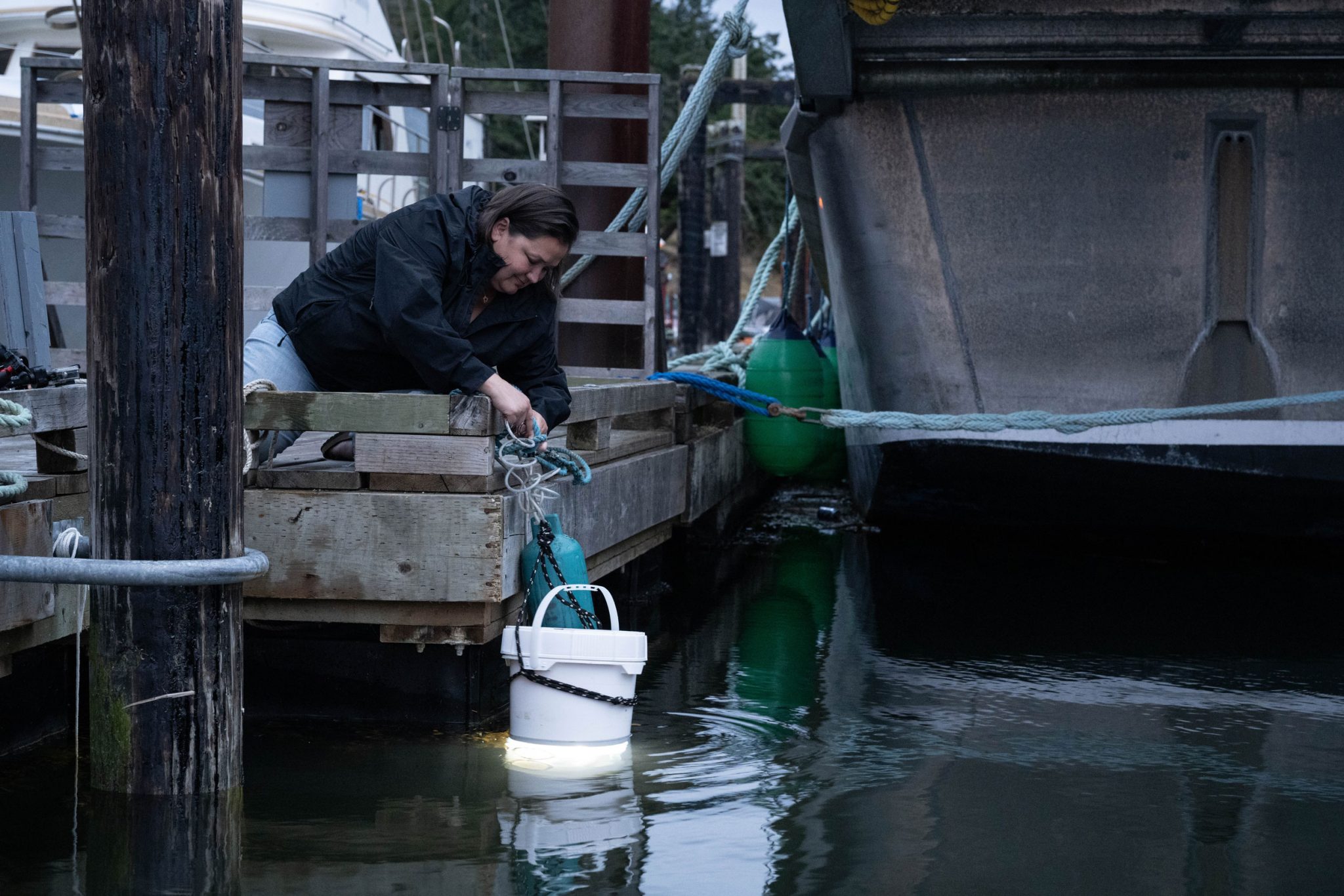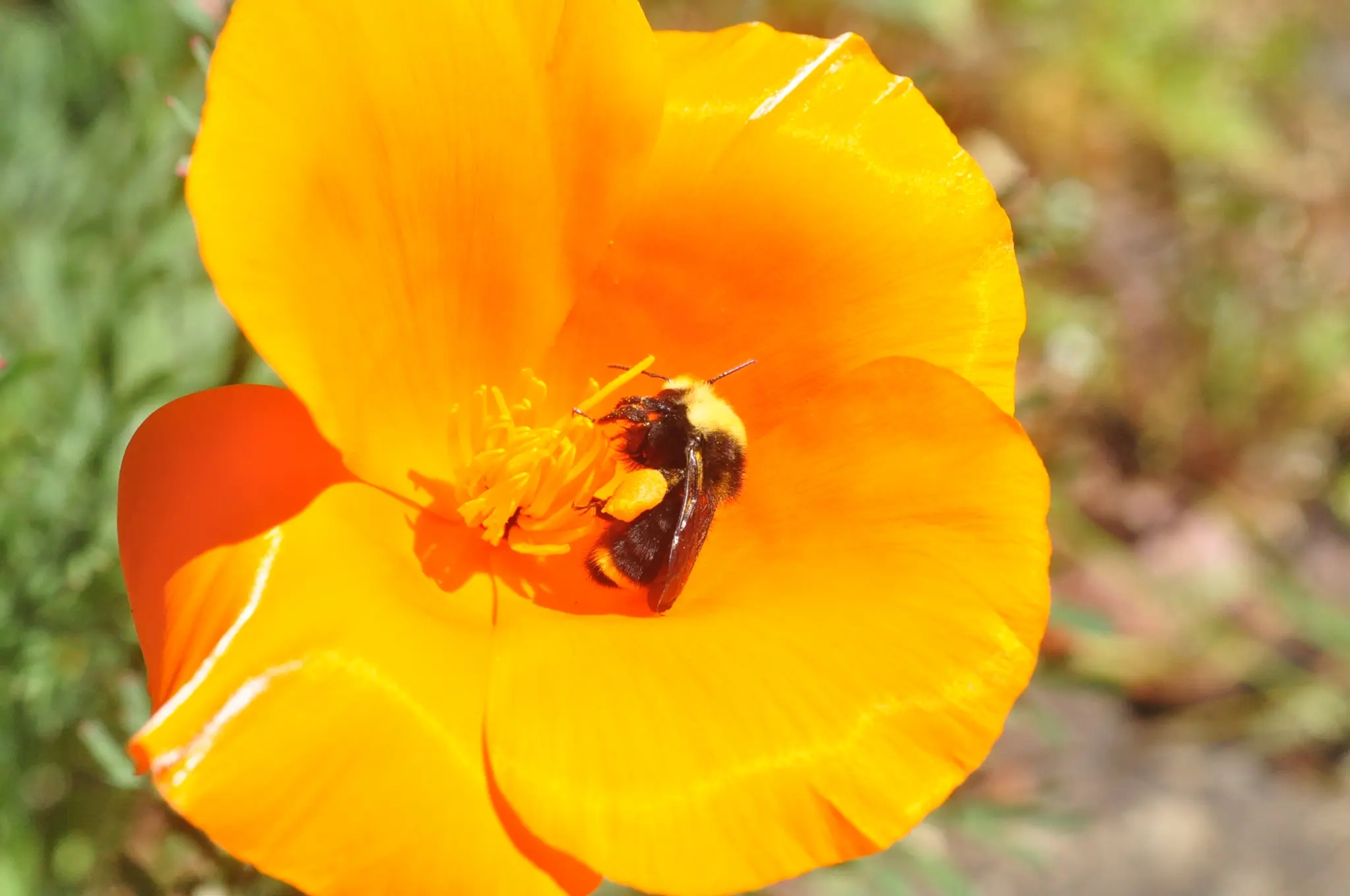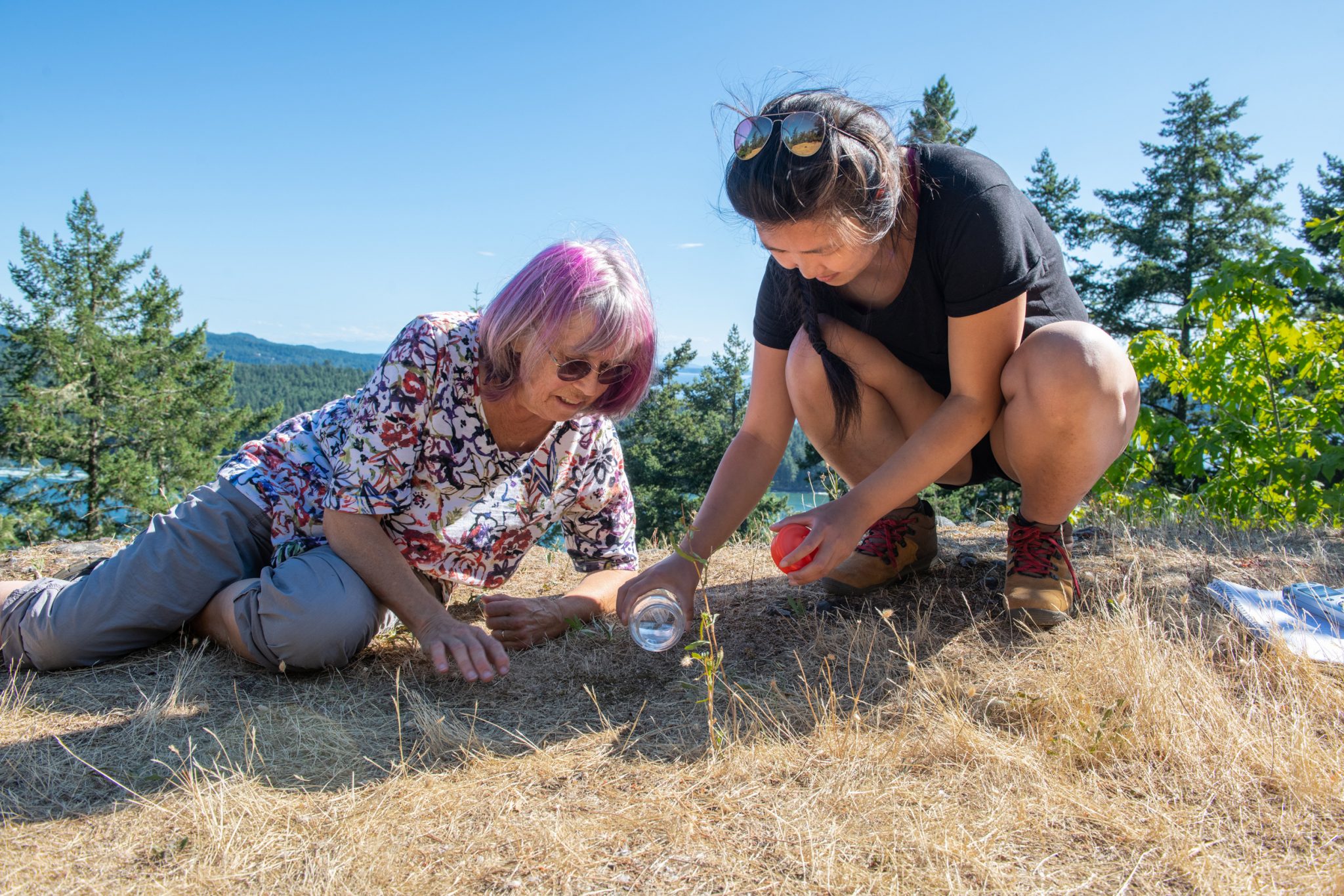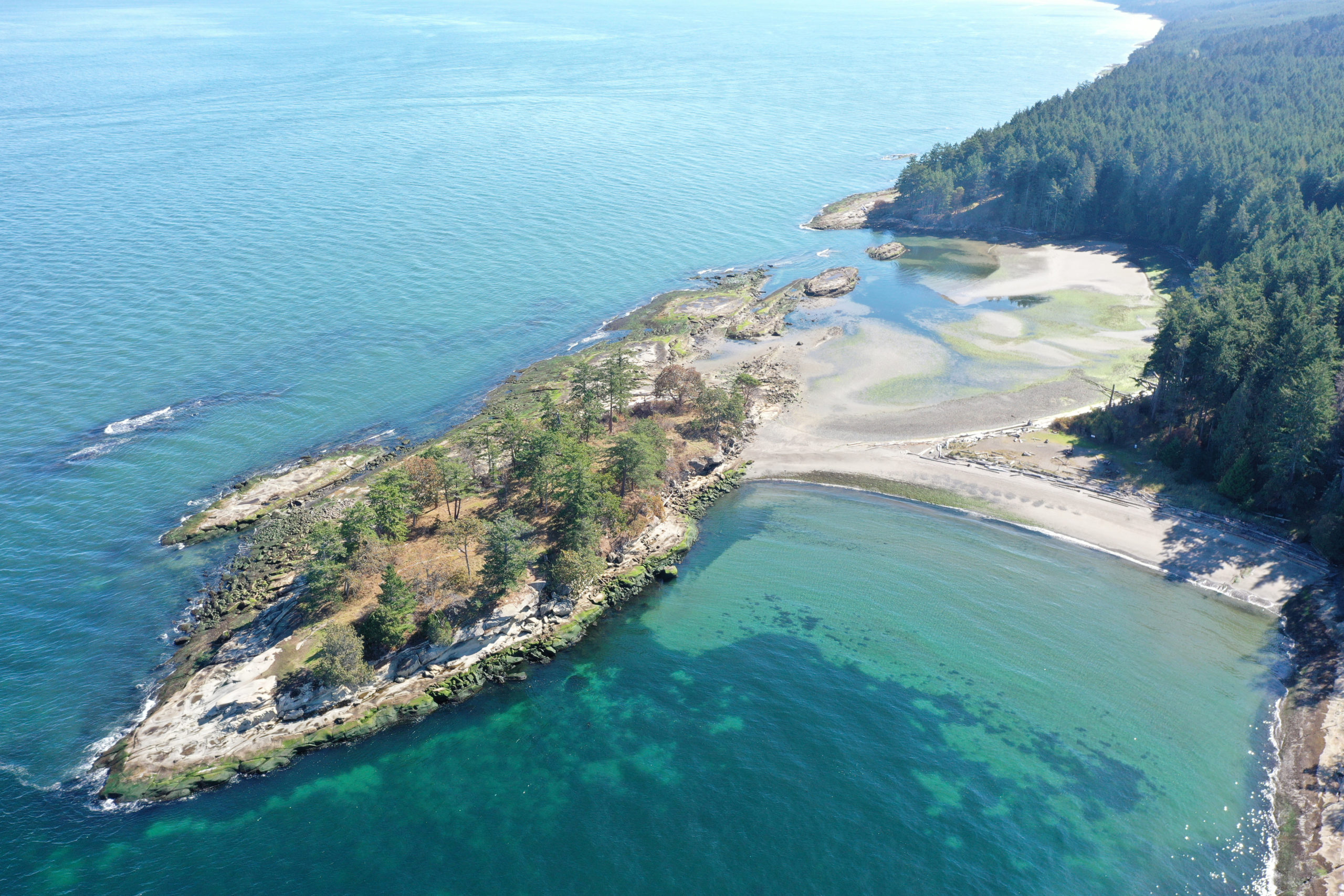CONTRIBUTIONS
Shining the light on baby crabs
A Hakai Magazine article by Spoorthy Raman featuring the Hakai Institute’s Sentinels of Change program, which is co-coordinated on Galiano Island by Jeannine Georgeson (IMERSS) and the Galiano Conservancy.
“For Georgeson, who is at the Whaler Bay dock almost every other day in the spring and summer to work with the trap, the motivation to be involved in the light trap monitoring project goes beyond science. It’s a way to connect with her culture, in which crabs hold a dear place, and to preserve family traditions, she says. She likens the work to her efforts to learn Hul’q’umín’um’, her family’s Coast Salish language. I ask her if she’ll continue to be involved in the project next year. ‘I’d love to do this for another 10 years,’ she says if that means preserving the Dungeness crab and its cultural significance for future generations. ‘I want my granddaughter to know what it’s like to be able to be a part of this.'”
Evidence of bumble bee extirpation and colonization: Galiano Island, British Columbia, Canada
Community science platforms such as iNaturalist hold promise as a novel approach to tracking biodiversity change with reference to historical baseline data. In this paper, we present evidence for historical change in an island bumble bee community, documenting the probable extirpation of three bumble bee species and a recent colonization event. Results from intensive sampling using blue vane traps and from iNaturalist observations converged on the same estimate of species richness in the present community, which significantly differed from estimates of richness in the historical community. These results demonstrate the potential for community science to aid in the detection of biodiversity change through a comparison of historical collections and crowd-sourced biodiversity data.
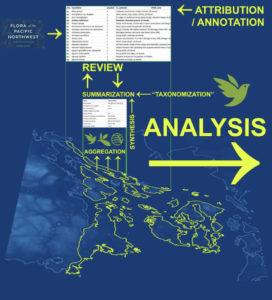
IMERSS biodiversity data science portal
We are working with communities throughout the Salish Sea to create open source tools for synthesizing, analyzing, and communicating biodiversity data. Our multidisciplinary, cross-cultural and transboundary partnerships bring together a diverse range of individuals and organizations to contribute to a shared vision for a more resilient and interconnected bioregion, including the American Indian Higher Education Consortium, Átl’ka7tsem / Howe Sound Biosphere Region Initiative, Canadian Institute for Ecology and Evolution, Inclusive Design Research Centre, Transition Salt Spring Society, Valdes Island Conservancy, and Whiteswan Environmental. From this community of practice emerges inclusive frameworks that have enabled our partners to synthesize and communicate a range of data, honouring story telling as a practice of central importance in conveying the information that matters to communities.
A community’s quest to document every species on their island home
A Hakai Magazine article by Marina Wang featuring the Biodiversity Galiano project.
“Naming leads to knowing, which leads to understanding. Residents of a small British Columbia island take to the forests and beaches to connect with their nonhuman neighbors.”
Toward an atlas of Salish Sea biodiversity
We describe Galiano Island’s marine animal diversity in relation to the Salish Sea’s overall biodiversity and quantify the proportional contributions of different types of sampling effort to our current local knowledge. In summary, we find that the Pacific Marine Life Surveys, a regional community science diving initiative, account for 60% of novel records reported for Galiano Island. Voucher specimens account for 19% and crowd-sourced biodiversity data 18% of novel records, respectively, with the remaining 3% of reports coming from other sources. These findings shed light on the complementarity of different types of sampling effort and demonstrate the potential for community science to contribute to the global biodiversity research community. We present a biodiversity informatics framework that is designed to enable these practices by supporting collaboration among researchers and communities in the collection, curation and dissemination of biodiversity data.
Access our data on the Global Biodiversity Information Facility.
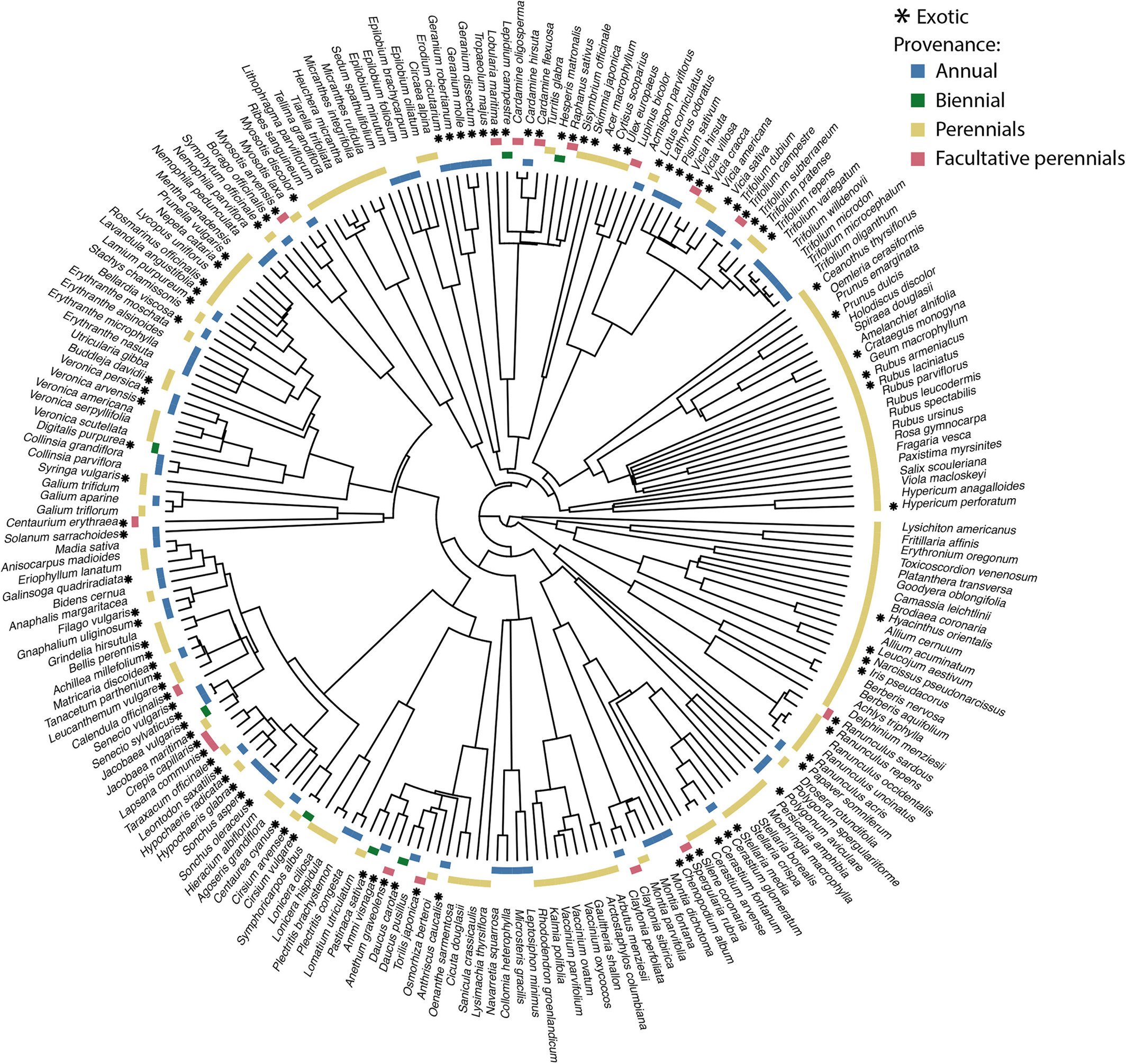
Phylogenetic restriction of plant invasion in drought-stressed environments
Our curated biodiversity datasets have created baselines valuable for research focusing on changing biodiversity dynamics in the drought-stressed ecosystems of the southern Gulf Islands. Combining methods from pollinator research and phylogenetic community ecology, we tested the influence of environmental filtering over plant community phenology across gradients of landscape disturbance and soil moisture. Critical seasonal fluctuations in floral resources coincided with significant phylogenetic clustering in plant communities, with decreasing plant diversity observed under conditions of increasing drought stress. Exotic plant species in the Asteraceae became increasingly pervasive across the landscape, occupying a late season temporal niche in drought-stressed environments.
We acknowledge the legacy of the late Harvey Janszen, a naturalist whose contributions to the floristics of the southern Gulf Islands of British Columbia greatly benefitted this study.

